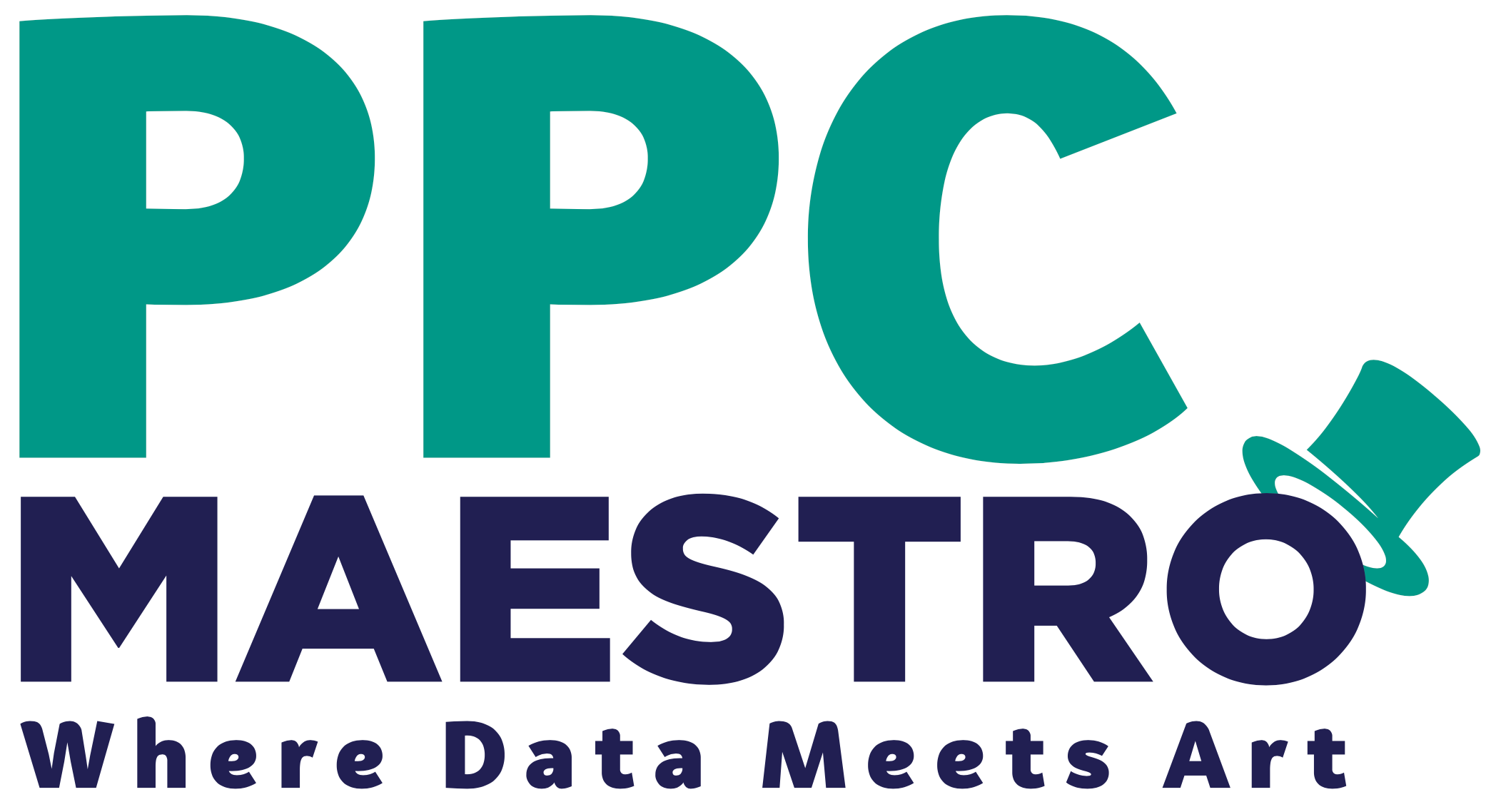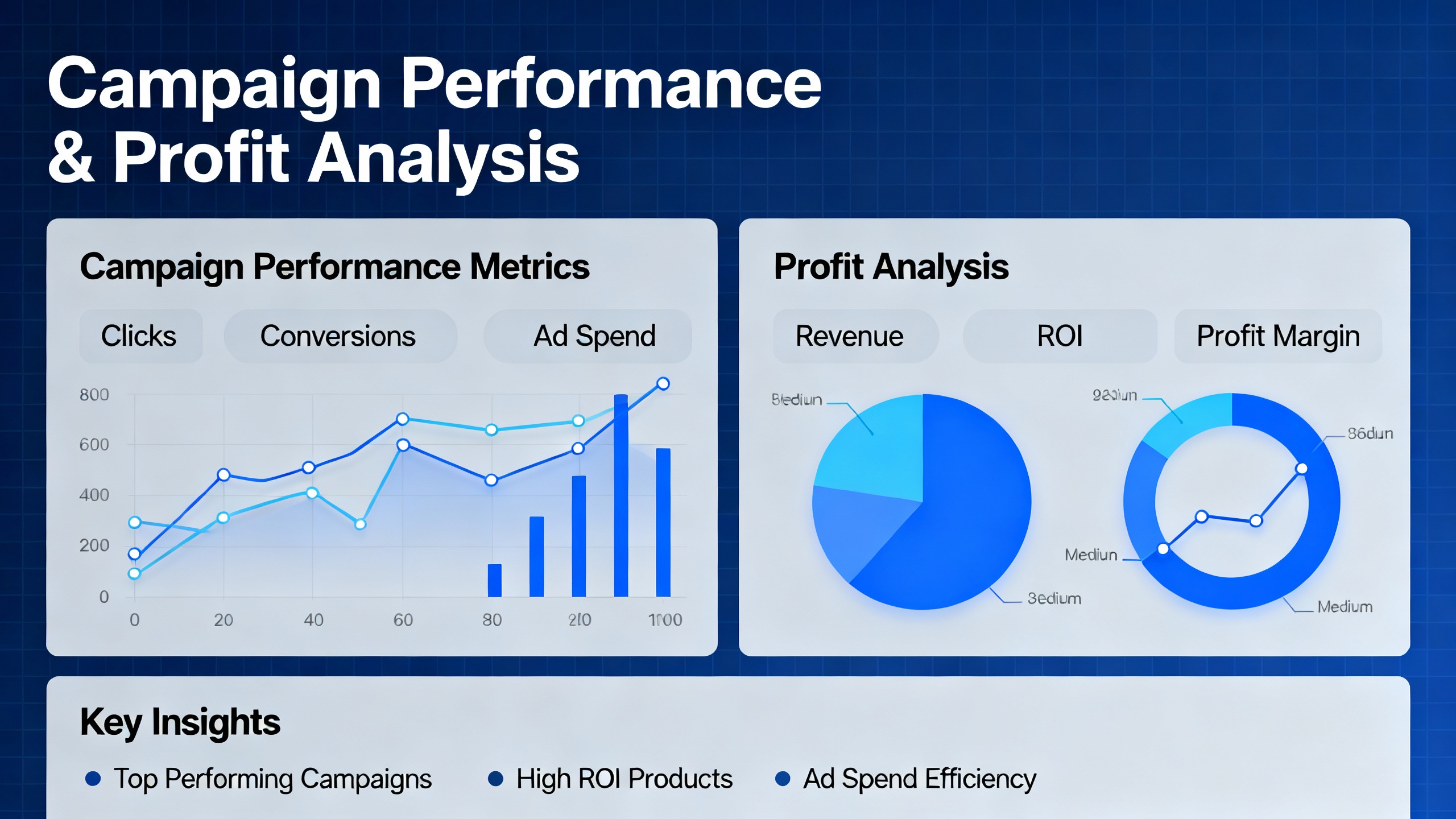Amazon PPC remains profitable for 7-figure sellers in 2025 despite rising costs averaging $1.04 per click. Success requires cutting wasted spend through negative keywords, optimizing TACoS below 15%, and balancing paid ads with organic growth. Strategic sellers see consistent ROI by focusing on profit, not vanity sales. These insights are based on real Amazon PPC questions 7-figure sellers bring up during audits.
The Questions Every 7-Figure Seller Asks Me
You've built a million-dollar business.
You're not new to Amazon PPC.
But you're frustrated. TACoS climbing. Ad costs up 20% year over year. And agencies keep feeding you the same generic playbook that stopped working in 2023.
I manage millions in ad spend for brands doing $1M-$10M annually. These are the exact Amazon PPC questions 7-figure sellers ask me when growth stalls. And unlike most “PPC experts,” I'm giving you straight answers backed by real audit data—not theory.
No fluff. No BS. Just what actually moves the needle on profit.
How Do I Lower My TACoS Without Killing Sales?
This is always one of the top Amazon PPC questions 7-figure sellers bring up.
Here's the reality: You can't lower TACoS by cutting ad spend alone. That's just math.
I audited a $3.2M brand last month. TACoS was stuck at 18%. Owner wanted it at 12%. His instinct? Slash ad budget.
Wrong move.
The real play: Boost organic while cutting waste.
Here's the sequence that works:
First—Fix your listings. If your conversion rate is below 10%, ads are compensating for a broken listing. I've seen sellers drop TACoS by 4 points just by fixing images and bullet points. No ad changes.
Second—Add negative keywords aggressively. That same $3.2M brand? We added 847 negative keywords in 30 days. Wasted spend dropped by $4,200 monthly. Same sales. Lower ad spend.
Third—Reinvest savings in high-ROI campaigns. Don't pocket the savings. Put them into campaigns with ACoS under 20% and strong organic lift.
Result: TACoS dropped from 18% to 13.5% in 60 days. Sales actually increased 8%.
The math works when organic grows faster than ad spend.
Need help identifying your wasted spend? Get your free audit here.
What's a "Good" ACoS or TACoS for a 7-Figure Brand?
This benchmark issue is constantly on the list of Amazon PPC questions 7-figure sellers care about.
Short answer: It depends on your margin and exit timeline.
But here's what I see across 50+ accounts I manage:
For TACoS:
Under 10% = Excellent. You're printing money.
10-15% = Solid. Room to optimize, but you're not bleeding.
15-20% = Yellow flag. You're spending too much relative to organic.
Over 20% = Red alert. You're on life support from paid ads.
For ACoS:
Varies by product margin, but most profitable brands target 20-30% ACoS.
If your margin is 40%, anything above 35% ACoS is a problem.
I audited a supplement brand doing $7M annually. Their ACoS was "only" 28%. Sounds good, right?
Wrong.
Their TACoS was 22% because organic sales were flat. They were trapped in a pay-to-play cycle.
The metric that matters isn't the percentage—it's the trend.
Is your TACoS decreasing over time? Good. That means ads are building organic momentum.
Is it flat or increasing? You're not building a business. You're renting sales from Amazon.
Is Amazon PPC Still Worth It With Costs Rising?
When discussing Amazon PPC questions 7-figure sellers worry about most, rising CPC is at the top.
The answer is yes. But only if you're strategic.
Average CPC in 2025 is $1.04—up from $0.89 in 2024. In competitive categories like supplements, CPCs hit $1.50 or higher.
The days of throwing money at broad match keywords and hoping are over.
Here's what separates winners from losers in 2025:
Winners use negative keywords like a scalpel. They test long-tail keywords with 30-70% lower CPCs. They daypart to avoid low-conversion hours. They treat PPC as a profit center, not a sales generator.
Losers complain about rising costs while running the same campaigns from 2022.
I just wrapped an audit for a kitchenware brand. $528K in annual ad spend. 41% of it wasted on irrelevant clicks.
We cut $18K monthly in wasted spend. Reallocated it to exact match long-tail keywords. CPC dropped from $1.12 to $0.78. ROI doubled.
Rising costs are actually an opportunity. Your lazy competitors are pulling back. That's when you lean in—smarter, not harder.
Want to see where your wasted spend is? Use our free calculator.

Should I Use an Agency or Hire In-House for PPC?
This decision remains one of the hardest Amazon PPC questions 7-figure sellers struggle with when scaling.
Brutal truth: Most agencies are terrible.
They run cookie-cutter strategies. They optimize for ACoS instead of profit. They use your account to test tactics for their other clients.
But hiring in-house is expensive. A decent PPC manager costs $80K+ annually. Plus tools, training, and the risk they leave in 18 months.
Here's my framework:
Hire in-house if:
You're doing $5M+ annually
You have 3+ brands or 50+ SKUs
You need daily hands-on control
You can afford $100K+ in salary + tools
Use an agency if:
You're doing $1M-$5M annually
You want experts without the overhead
You're planning an exit and need systems documented
You've been burned by agencies before (find one that shows results, not promises)
The middle ground? Hybrid model. Agency handles strategy and optimization. You or a VA handles execution.
I see this work for brands in the $2M-$4M range all the time.
Key question: Does your current setup focus on profit or just ACoS? Most agencies optimize for ACoS. That's backwards. Profit is what matters.
Book a call if you want a second opinion on your setup.
How Much Should I Budget for Amazon Ads at My Sales Level?
Industry averages are useless here.
But I'll give you benchmarks from real accounts I manage:
For established brands ($1M-$3M/year):
Start with 15-20% of revenue for ad budget
Target dropping this to 10-15% within 6 months as organic builds
For scaling brands ($3M-$10M/year):
Allocate 10-15% of revenue to ads
Focus on TACoS trending downward, not the absolute percentage
For brands planning an exit:
Keep ad spend under 12% of revenue
Buyers want to see organic strength, not ad dependency
I worked with a brand doing $4.5M. They were spending 22% on ads.
We restructured campaigns, killed waste, and optimized listings. Six months later, ad spend was 11% of revenue. Sales up 18%.
Your ad budget should shrink as a percentage of revenue over time. If it's not, you're building Amazon's business, not yours.
The real question isn't "how much should I spend?" It's "how much am I wasting?"
Find out with our Wasted Ad Spend Calculator.
When Should I Start PPC for a New Product?
Among Amazon PPC questions 7-figure sellers ask, launch strategy is critical.
Never launch blind.
Here's the sequence I use for every product launch across my client portfolio:
Week 1-2: Pre-launch
Get 10-15 reviews (early reviewer program, vine, friends/family)
Optimize listing (conversion rate matters more than anything)
Build negative keyword list from competitor research
Week 3-4: Launch phase
Start auto campaigns at aggressive bids
Run exact match on 5-10 high-intent keywords
Daily budget: $50-100 depending on category
Accept 40-50% ACoS during launch (you're buying rank)
Week 5-8: Optimization phase
Add negative keywords from search term reports
Shift budget to converting keywords
Target 25-35% ACoS
Watch for organic ranking improvements
Month 3+: Scaling phase
TACoS should be trending down
ACoS target: 20-30%
Organic sales should represent 40%+ of total sales
I launched a home goods product last year. Month 1 TACoS was 38%. By month 4, it was 16%. By month 8, it was 11%.
That's how you know PPC is working—it's building organic momentum, not just renting sales.
If your TACoS isn't improving after 90 days, something's broken. Usually the listing.
What's the Right Ratio of Paid to Organic Sales?
There's no magic number.
But I'll tell you what I see in profitable accounts:
Healthy established brands: 60-70% organic, 30-40% paid
New products (first 6 months): 30-50% organic, 50-70% paid
Brands planning an exit: 70%+ organic, under 30% paid
Here's what matters: The trend, not the snapshot.
If you launched 6 months ago and paid is still 80% of sales, you've got a problem. Either your listing is weak or your PPC strategy isn't building organic momentum.
I don't obsess over hitting a specific ratio. I obsess over the trajectory.
If organic is growing as a percentage of total sales every month, you're winning.
If it's flat or shrinking, your ads are a band-aid on a bigger problem.
How Do I Know If My Campaigns Are Actually Optimized?

Most sellers think "optimized" means low ACoS.
Wrong.
Optimized means maximum profit with minimum waste.
Here's my 5-minute diagnostic:
Check your wasted spend percentage. Pull your search term report. How many clicks are on irrelevant terms? If it's over 20%, you're bleeding money.
Review your negative keyword list. If you have fewer than 200 negative keywords after 3 months of running PPC, you're not optimizing.
Look at your TACoS trend. Is it flat, rising, or falling? Falling = optimized. Flat or rising = you're just spending money.
Examine your campaign structure. If you're running 3 campaigns with 200+ keywords each, that's not optimization. That's chaos.
Check placement reports. Are you paying premium for top-of-search when rest-of-search converts better? That's wasted margin.
Last month I audited a $1.8M brand. They thought their campaigns were "optimized" because ACoS was 26%.
I found $7,300 in monthly wasted spend in 45 minutes.
Same sales. Lower ad spend. Higher profit.
That's optimization.
Final Thoughts: Profit Beats Everything
If you take one thing from this, make it this:
Your PPC strategy should be about profit, not sales.
Revenue is vanity. Profit is sanity. And if you're planning an exit, buyers care about profit, not how many sales you can generate by lighting money on fire.
I've seen too many 7-figure sellers trapped in the "more sales at any cost" trap. They hit $5M in revenue and wonder why they're working 70 hours a week for $150K in owner's draw.
The sellers who win are the ones who treat PPC like a profit center.
Cut waste. Build organic. Optimize listings. Track TACoS like your exit depends on it (because it does).
And if you need help figuring out where you're leaving money on the table, I've built tools and systems specifically for brands like yours.
Frequently Asked Questions
Q: How often should I review my Amazon PPC campaigns?
A: Review campaign performance weekly at minimum. Check search term reports every 7-10 days to add negative keywords and identify new opportunities. Monthly deep dives should analyze TACoS trends, placement performance, and budget allocation. Daily checks are overkill and lead to reactive changes based on insufficient data. The sweet spot is weekly optimization with monthly strategic reviews.
Q: What percentage of Amazon sellers use PPC advertising?
A: Over 70% of active Amazon sellers use some form of PPC advertising. For 7-figure sellers, that number approaches 95%. PPC isn't optional in 2025—it's the cost of doing business. The question isn't whether to use PPC, but whether you're using it profitably. Most sellers waste 30-40% of their ad spend on irrelevant clicks and poor targeting.
Q: Can I run profitable Amazon PPC with a small budget?
A: Yes, but you need laser focus. Start with $500-1000 monthly, use exact match keywords only, add negative keywords aggressively, and optimize listings first. Small budgets can't afford waste. I've seen brands with $30 daily budgets outperform those spending $300 because they eliminate waste and focus on high-converting keywords. It's about efficiency, not size.
Q: What's the difference between ACoS and TACoS on Amazon?
A: ACoS measures ad spend divided by ad-attributed sales only. TACoS measures ad spend divided by total sales (paid + organic). TACoS is more important for 7-figure sellers because it shows whether ads are building organic momentum or just renting sales. A low ACoS with high TACoS means you're not growing organically—you're trapped in pay-to-play.
Q: How long does it take to see results from Amazon PPC optimization?
A: Quick wins (adding negative keywords, fixing obvious waste) show results within 7-14 days. Strategic improvements (campaign restructuring, listing optimization) take 30-60 days. Building organic momentum takes 90+ days. If you're not seeing improvement in 60 days, something's fundamentally wrong—usually the listing, not the ads. Patience matters, but so does knowing when to pivot.





